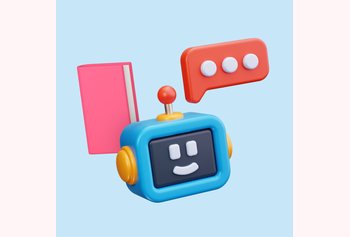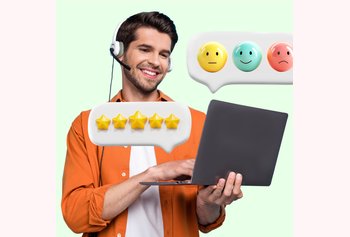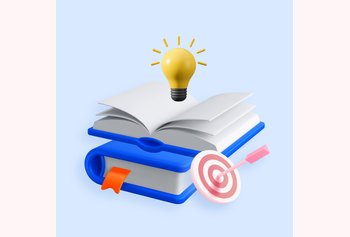Customer Enablement 101: The What And How (With Examples)

Table of contents
Why does a customer buy your product?
At first glance, it could seem like it’s for the shiny new features, its cutting-edge design, or even the promises you made in your marketing campaigns.
But in reality, there’s only one reason. They buy your product to solve a problem.
However, the story doesn’t always end there. Even the most well-built products can leave customers disappointed if they don’t know how to use them effectively.
That’s where customer enablement comes in. It bridges the gap between customer expectations and product capabilities, ensuring that your customers not only understand but also maximize the value of your product.
In return, you get higher retention rates, stronger loyalty, and advocacy that your competitors can’t beat. Without further ado, let’s understand and start building the right customer enablement strategy for your business.
Table of Contents
- What Is Customer Enablement?
- Benefits Of Effective Customer Enablement
- How to Get Started With Your Customer Enablement Strategy
- Customer Enablement Success Stories
What Is Customer Enablement?
Customer enablement is a proactive strategy that equips your customers with the resources, knowledge, and tools they need to succeed with your product or service.
To take a less technical approach, think of it this way: customer enablement is an all-in-one toolkit that ensures customers not only use your product but thrive with it.
Think of any big brand, like Apple. Their detailed user manuals, support articles, and video tutorials are all designed to empower customers to make the most out of their devices.
It’s not just about selling a phone; it’s about enabling users to tap into its full potential. That’s customer enablement.
Note: Often confused with customer success, customer enablement focuses on educating and empowering customers to use a product effectively, whereas customer success centers around the broader customer journey, ensuring their overall satisfaction with the company.
Benefits Of Effective Customer Enablement
Customer enablement is crucial because, as we discussed, customers expect more than just a product—they expect a solution to their problems. Here are some business outcomes that will make it clear why this is a win-win for you and your customers:
- Improved Customer Satisfaction: This one’s a no-brainer: when customers feel empowered to use your product, satisfaction levels increase dramatically.
- Higher Retention Rates: A good enablement strategy can reduce churn by making sure customers see continuous value in your product.
- Increased Customer Advocacy: Empowered customers are more likely to promote your brand and become its advocates.
How to Get Started With Your Customer Enablement Strategy
To implement a customer enablement strategy that drives loyalty, it’s crucial to lay the groundwork with clear goals and processes.
Each step should empower your customers with the knowledge they need to succeed while also providing ongoing support to ensure continuous engagement.
Let’s break it down into four actionable steps.
Step 1: Identify Customer Segments and Needs
The first step in creating an effective customer enablement strategy is understanding your customer. Not all customers have the same goals, challenges, or product usage patterns. So, the one-fits-all approach might not work the best here.
By identifying distinct customer segments, you can tailor enablement efforts to meet each group’s unique needs. This approach increases engagement, reduces frustration, and ensures a better customer experience.
Why it helps: Tailored customer education fosters better user experience and increases retention rates. For example, HubSpot segments its users by roles and offers personalized training materials, ensuring everyone gets relevant guidance.
Tips to do this:
- Analyze CRM data: Use tools like HubSpot or Salesforce to track customer behavior. Create segments based on usage data and customer feedback to better understand their specific needs.
- Implement targeted content: Consider building separate knowledge bases or onboarding flows for each segment. For instance, advanced users might get in-depth webinars, while new users get bite-sized tutorials.
Step 2: Develop Onboarding and Training Programs
A well-thought-out onboarding program makes all the difference. This is the first touch point for your customer post-purchase, so make sure it counts.
Without proper guidance, customers may feel overwhelmed, reducing engagement. On the other hand, if you do this well, your customers will adopt your product easily and, hopefully, stick to it.
You want all your users to be able to become pros at using your product. Develop educational resources like step-by-step guides, webinars, and certification courses to guide customers from novice to expert.
Why it’s necessary: Good onboarding builds trust and ensures customers get value from your product faster. A good example of this is Slack, which uses interactive tutorials during onboarding to quickly teach new users how to navigate the platform.
Tips to do this:
- Offer tailored onboarding paths: Tools like UserGuiding allow you to create in-app tutorials customized for different user segments. For instance, first-time users should be shown basic features, while returning customers can explore more advanced ones.
- Automate email drip campaigns: Use tools like Mailchimp to send regular training content and helpful reminders to users during the critical first 90 days.
Step 3: Implement Proactive Support Channels
Proactive support simply means that you are offering help before your customers even realize they need it. You know what they need, and you can deliver it before they get a chance to reach out to you.
Clearly, customers are bound to love it. It shows you genuinely care for their time and trust in your business.
By integrating a variety of support channels—such as a knowledge base, live chat, and in-app guidance—you empower customers to resolve issues quickly and independently, which enhances their overall experience. This, if done correctly, leaves a mark (in the best way possible) on your customers that your competitors probably don’t.
Why it matters: Offering easily accessible, proactive support reduces frustration and builds confidence in your product. It also builds a sense of loyalty in your customers that can give you an edge over your competitors.
Tips to do this:
- Deploy a chatbot for FAQs: Pick the right customer service platform that can help you automate responses to common customer queries in real-time. This frees up your support team to focus on more complex issues.
- Add in-app guidance: This is not just something you need for onboarding. With in-app guidance, you can offer real-time prompts and step-by-step instructions within your app for complex or even newer features. This reduces the need for direct support and keeps users engaged.
Step 4: Gather Feedback and Continuously Improve
We keep saying how an “effective” customer enablement strategy can do wonders. But what exactly is it?
An effective customer enablement strategy is the one that is:
A. Well-designed and researched
B. Evolves with the needs of the customers
Many businesses focus on A but often overlook B.
Continuously gathering feedback allows you to refine your approach and ensure that your enablement resources are effective. This makes customers feel valued and keeps your product in line with their evolving expectations.
Why it’s necessary: Feedback provides actionable insights that let you improve your product and customer enablement efforts. Airbnb, for example, regularly gathers user feedback through surveys to enhance their platform.
Tips to do this:
- Use real-time feedback tools: Leverage tools like Typeform to gather insights at key points of the customer journey (e.g., after onboarding). This lets you adjust your enablement efforts in real-time—if a customer has negative feedback during onboarding, you know they need more help.
- Implement Net Promoter Score (NPS): Tools like Delighted allow you to track customer satisfaction, identify areas of improvement, and make iterative changes based on direct user feedback.
Customer Enablement Success Stories
Slack’s Interactive Walkthroughs
You must have witnessed this first-hand recently when Slack came up with their latest feature update. To ensure users adopted the changes smoothly, Slack introduced interactive in-app walkthroughs. These guided users through each new feature step-by-step, reducing friction and shortening the learning curve for their existing and new users.
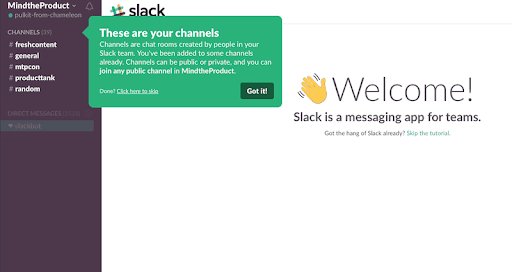
Takeaway: In-app guides help improve user engagement and reduce the time it takes for customers to see value, making new features more accessible and user-friendly from the get-go. If you are in the SaaS space, this is particularly important as it can help you create customer stickiness from the get-go.
HubSpot’s Personalized Training Programs
HubSpot tailored its customer enablement strategy by offering personalized training sessions based on user roles. Through this, they provided specific training content for sales teams, marketers, and developers, ensuring each segment got what they needed to succeed with the platform.
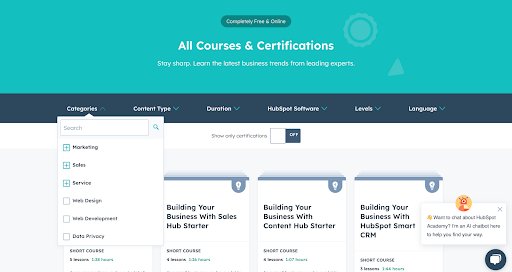
HubSpot helps its diverse customer base learn more and be more successful at their jobs.
Takeaway: Personalized enablement keeps users engaged and ensures they can extract maximum value from your product, which boosts overall satisfaction and retention. Understand your customers and then figure out how you can cater to different personas effectively.
Make your business stand out with effective customer enablement
It all boils down to one thing: your growth depends on how well you can help your customer become successful.
When you invest in customer enablement, you’re not just helping customers solve their problems—you’re ensuring they continue to find value in your product over time.
Personally, as a customer, I know I would stick with a company that not only delivers a great product but goes the extra mile to ensure I’m successful in using it.
So why not empower your customers today and build long-lasting relationships that benefit everyone? Use the steps in this article and help your customers achieve their goals, and in turn, your own.












